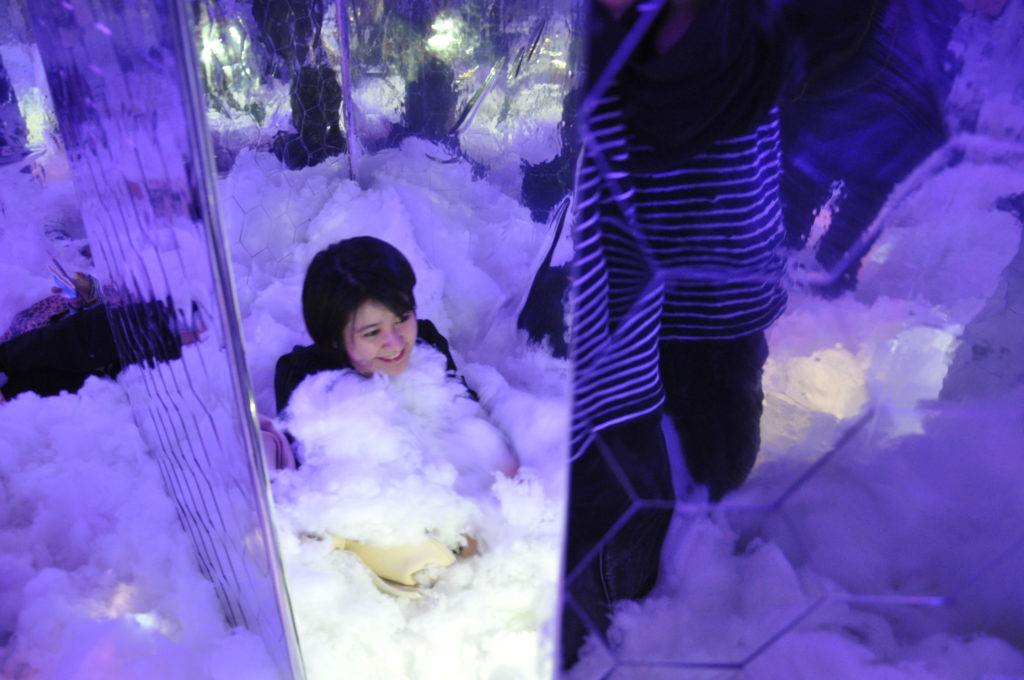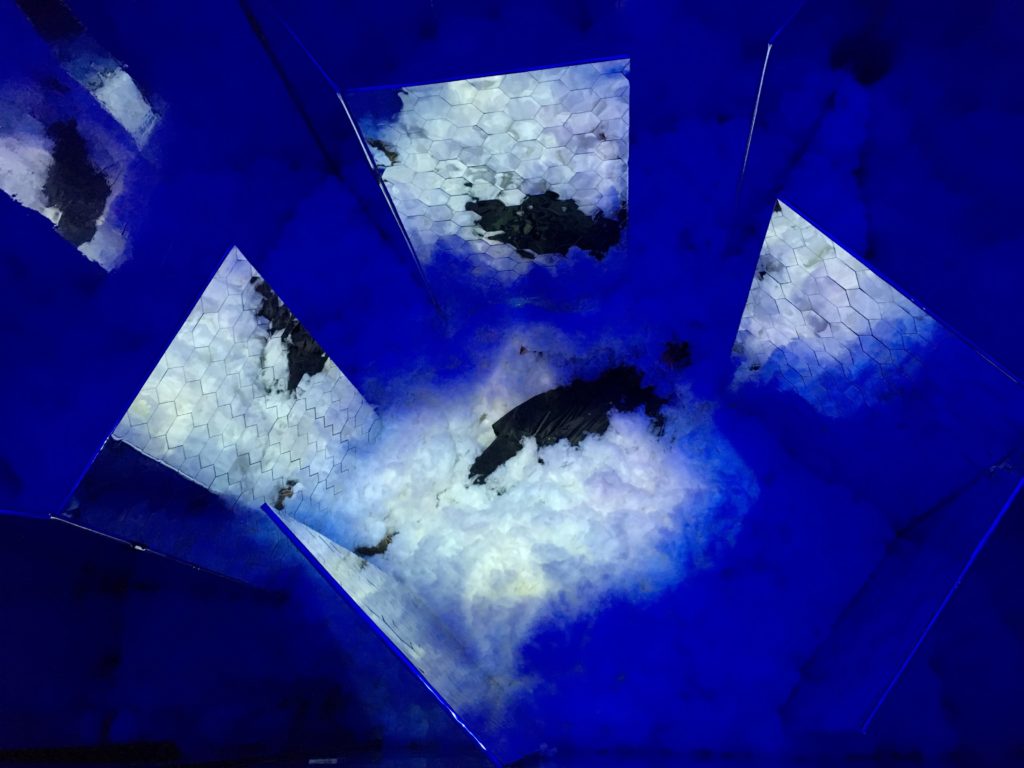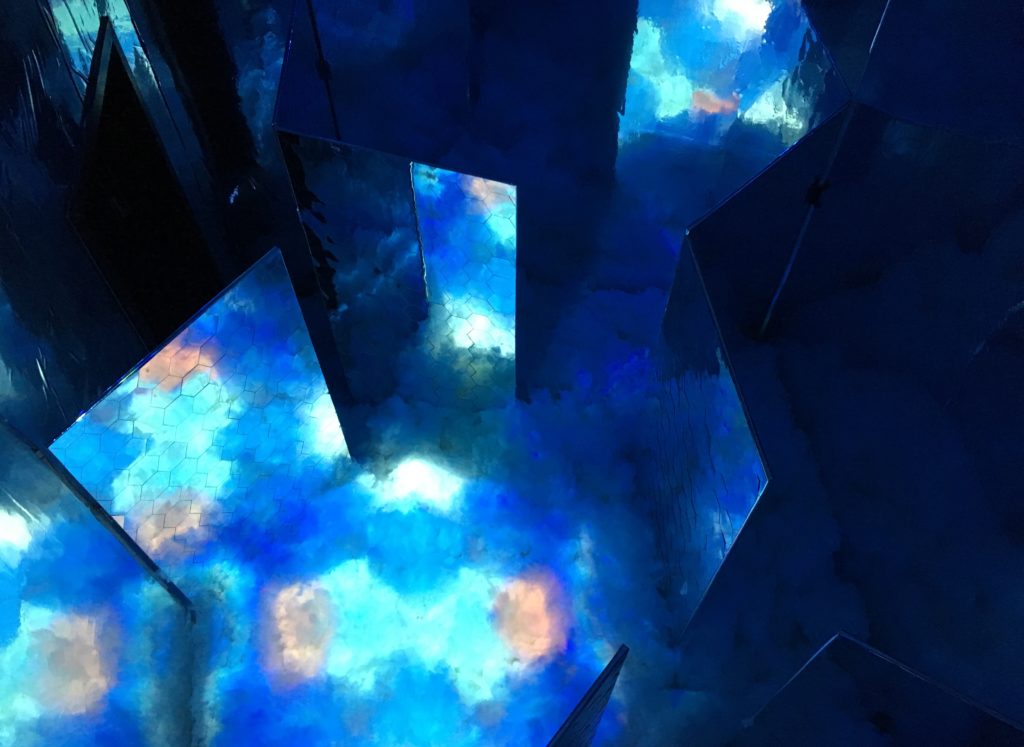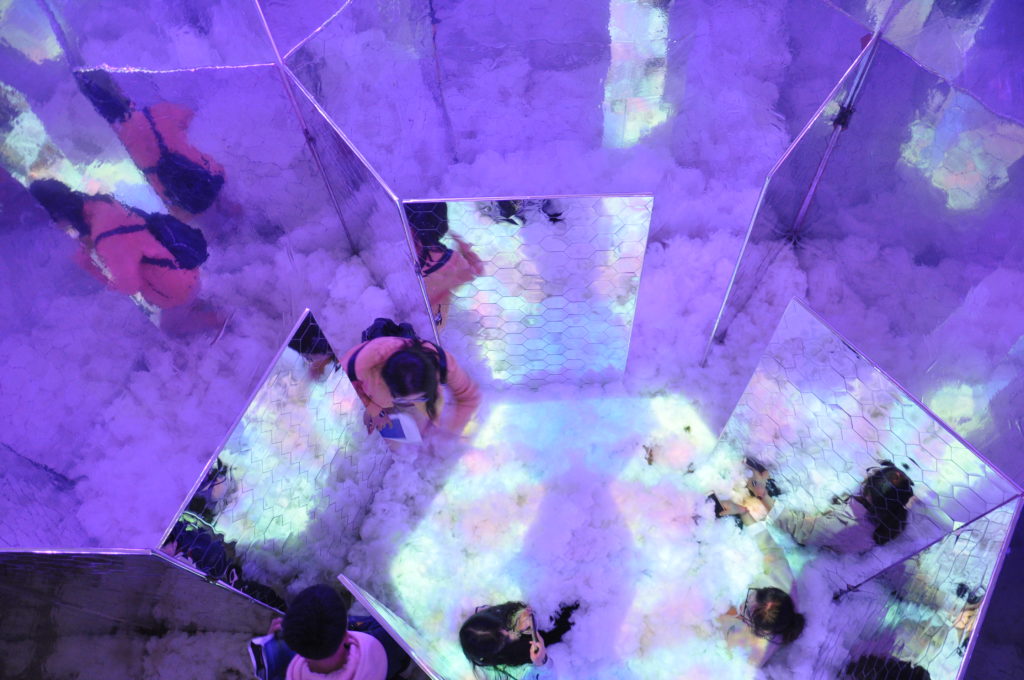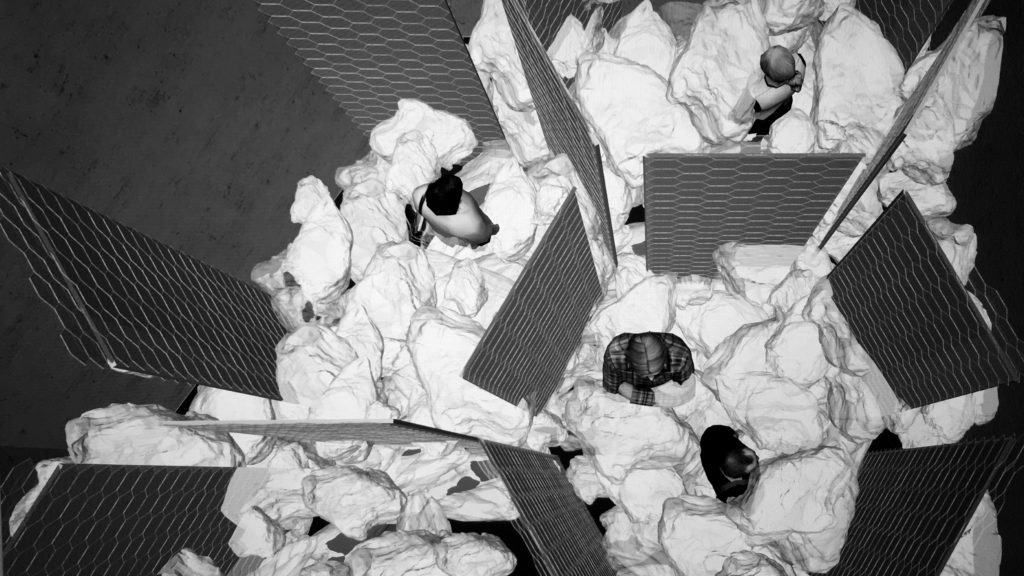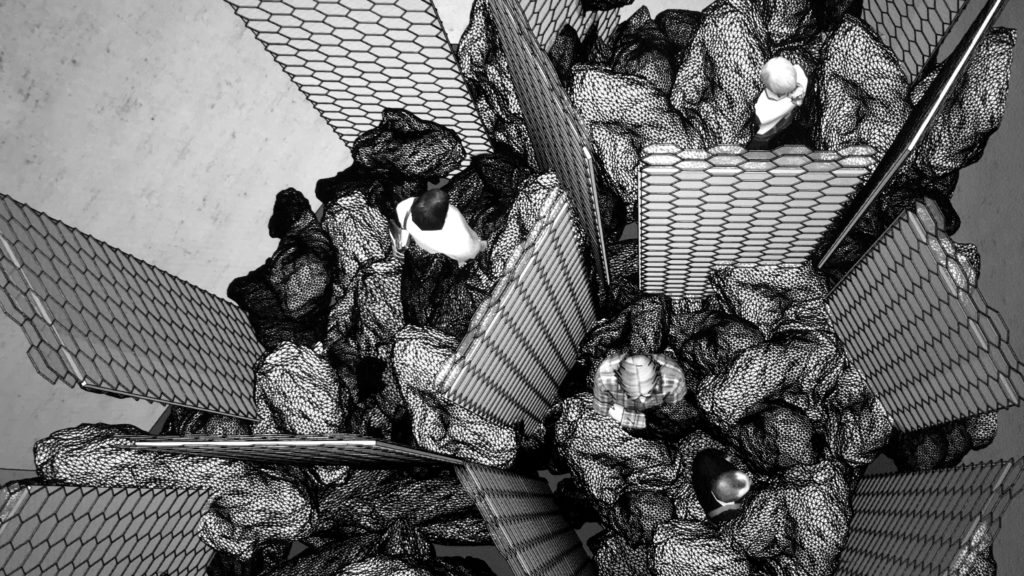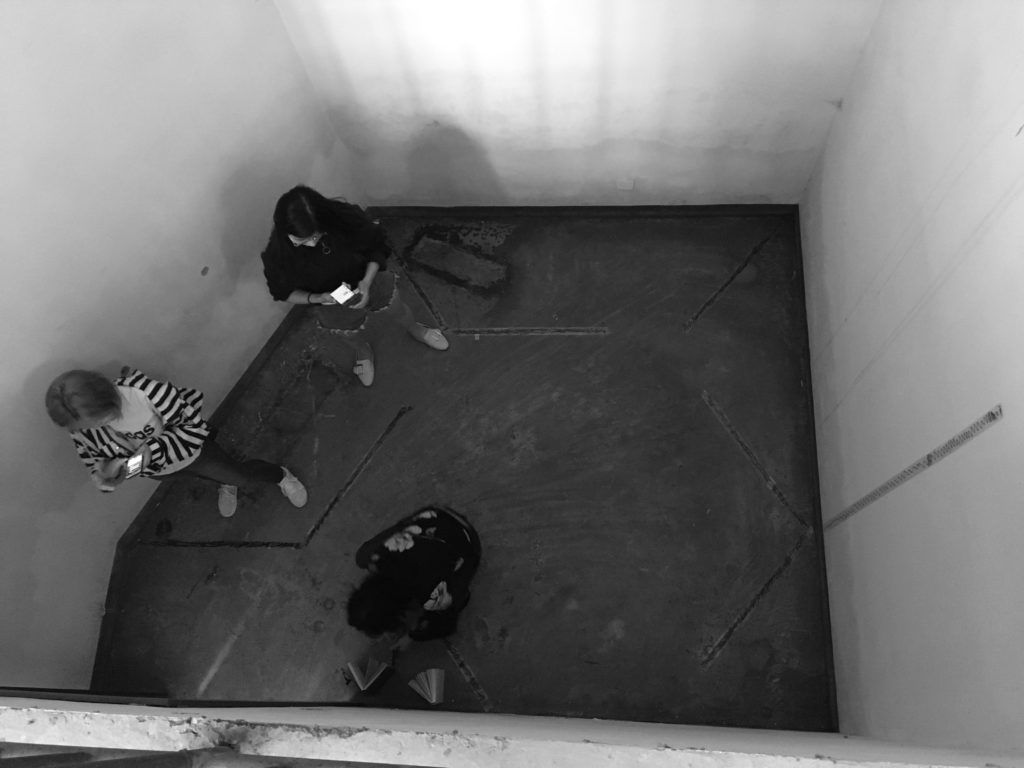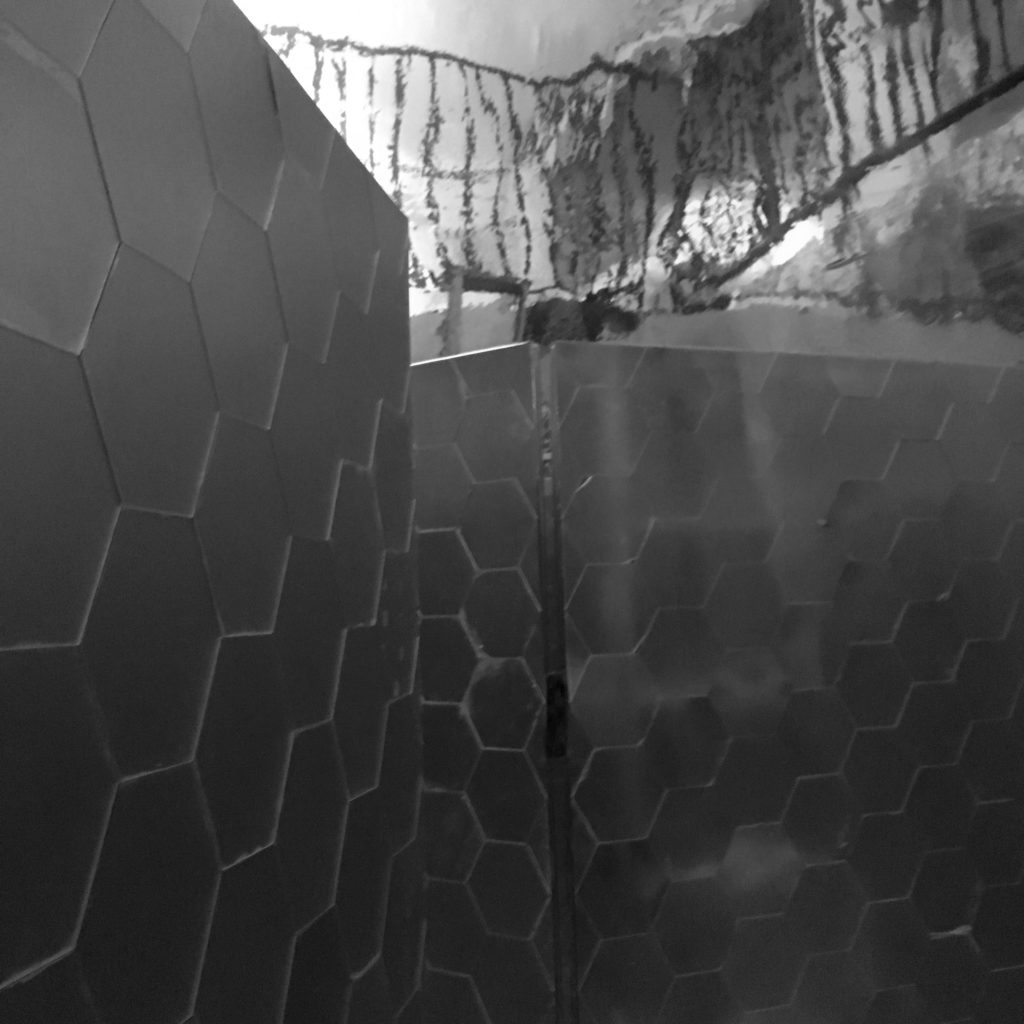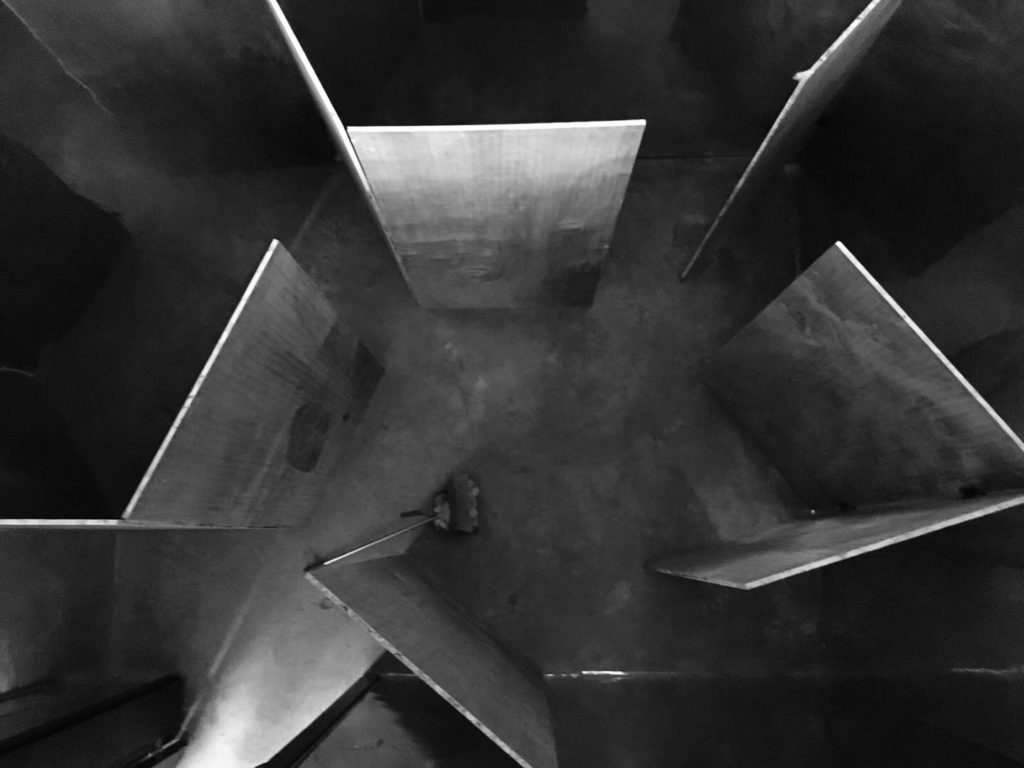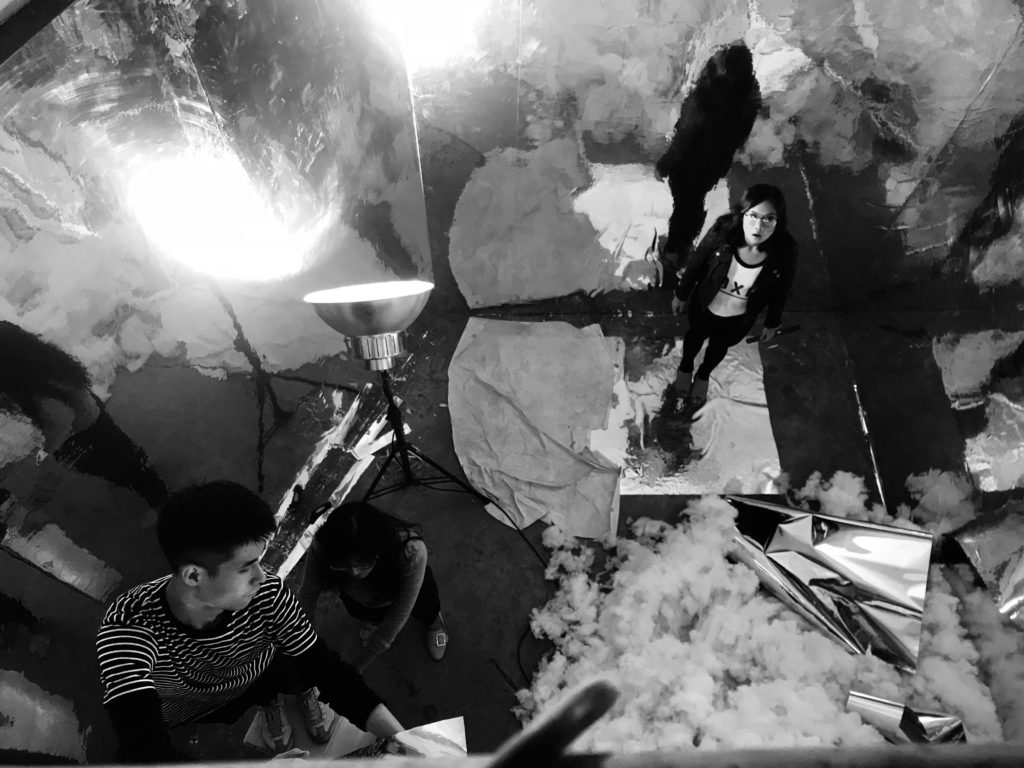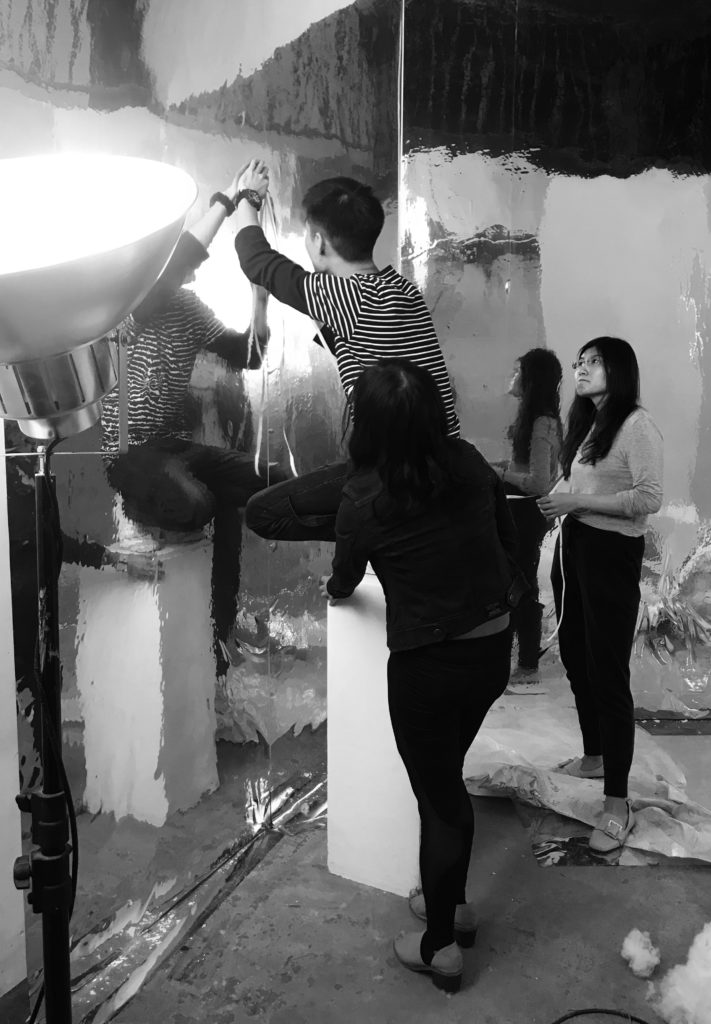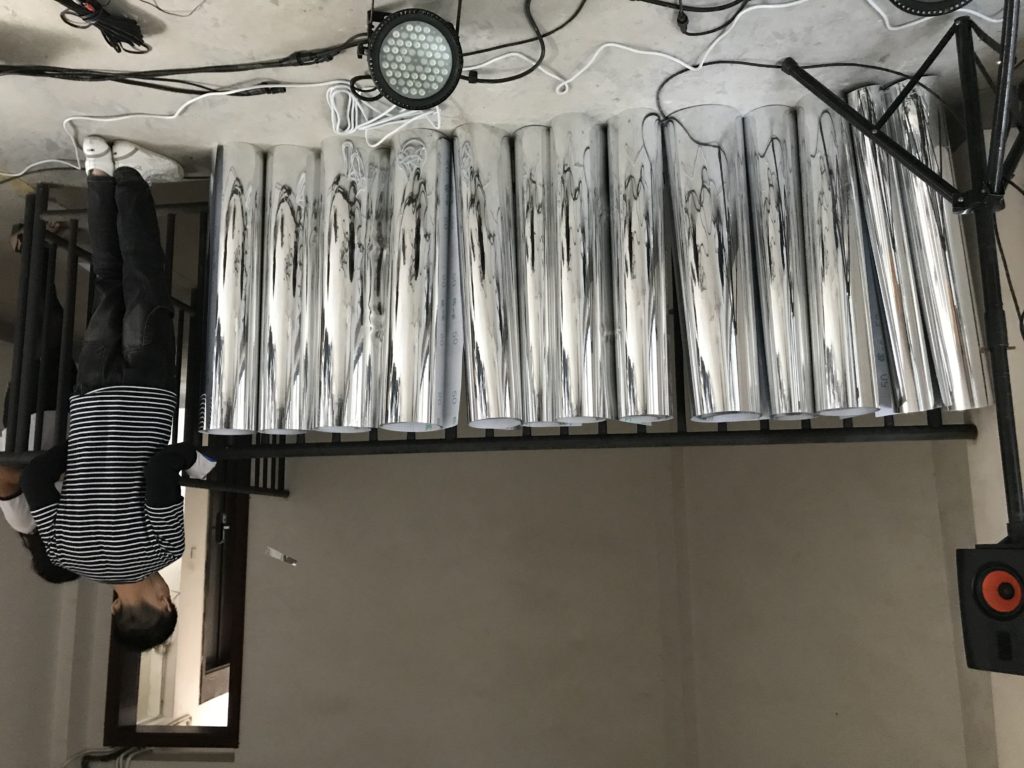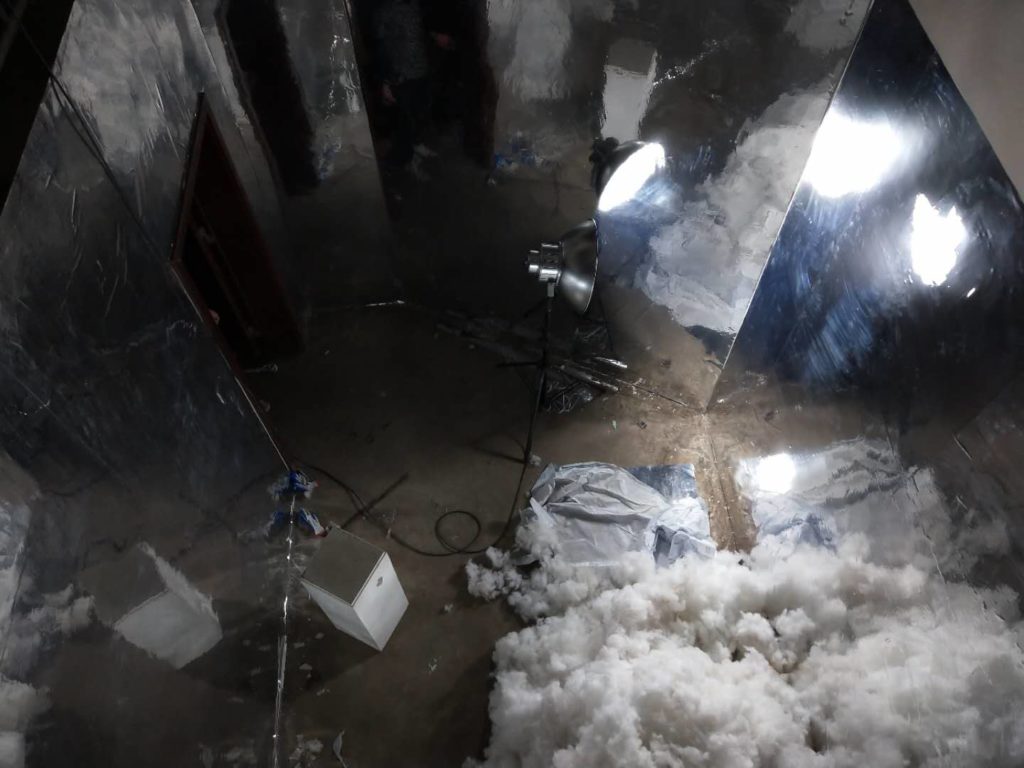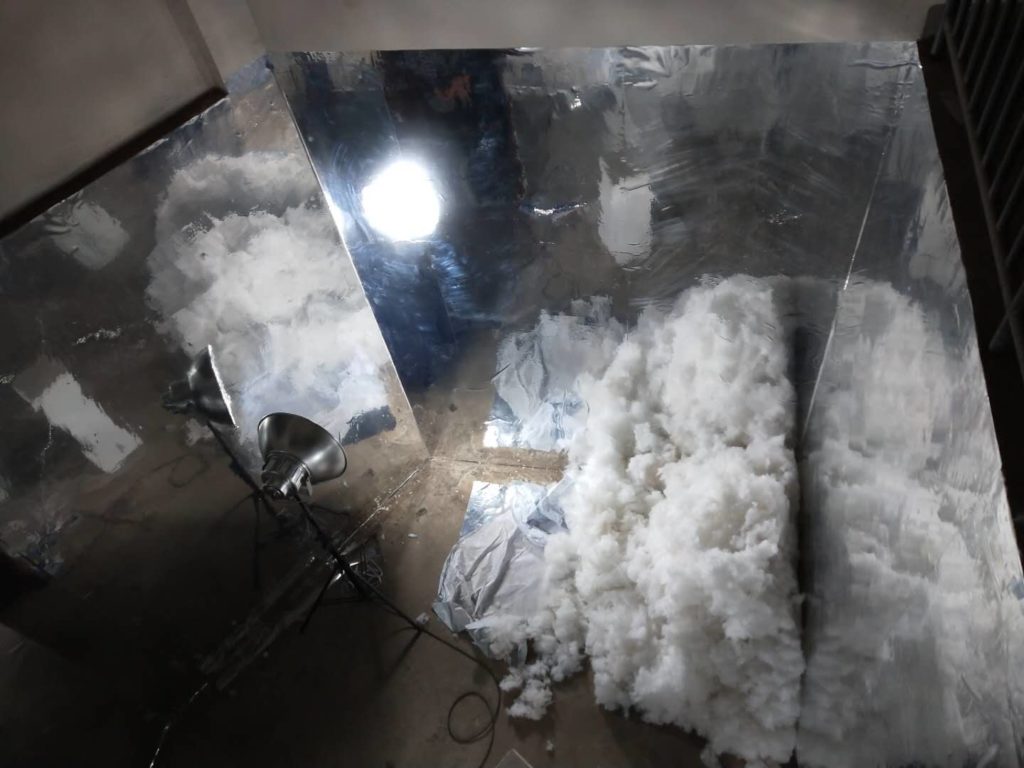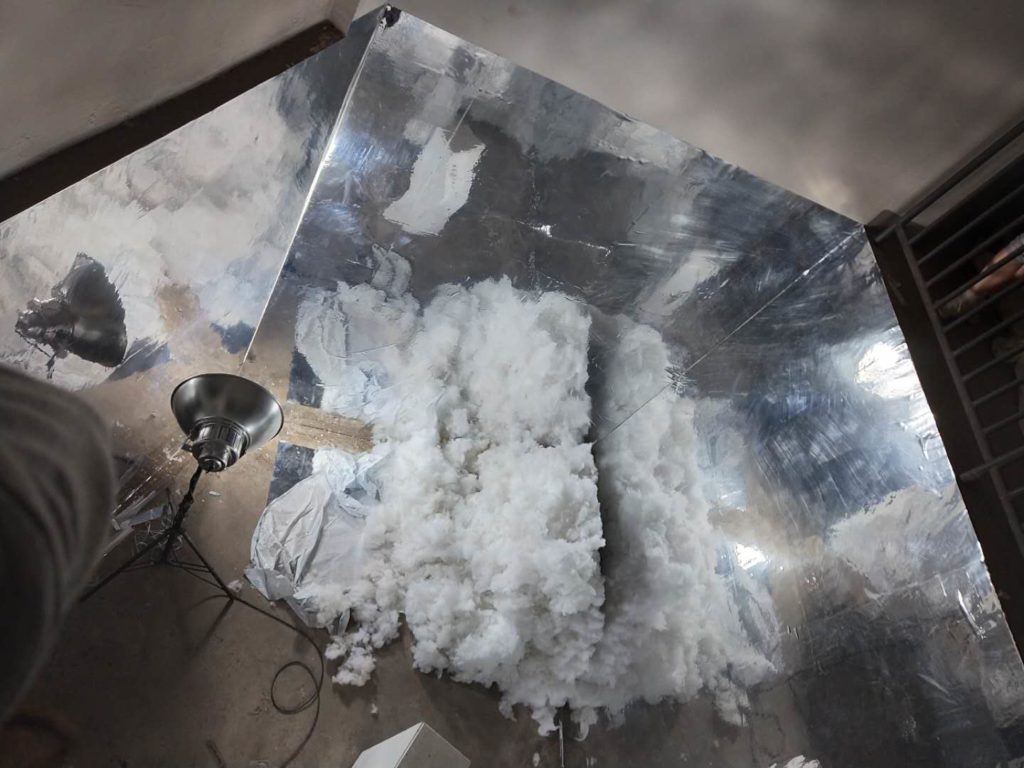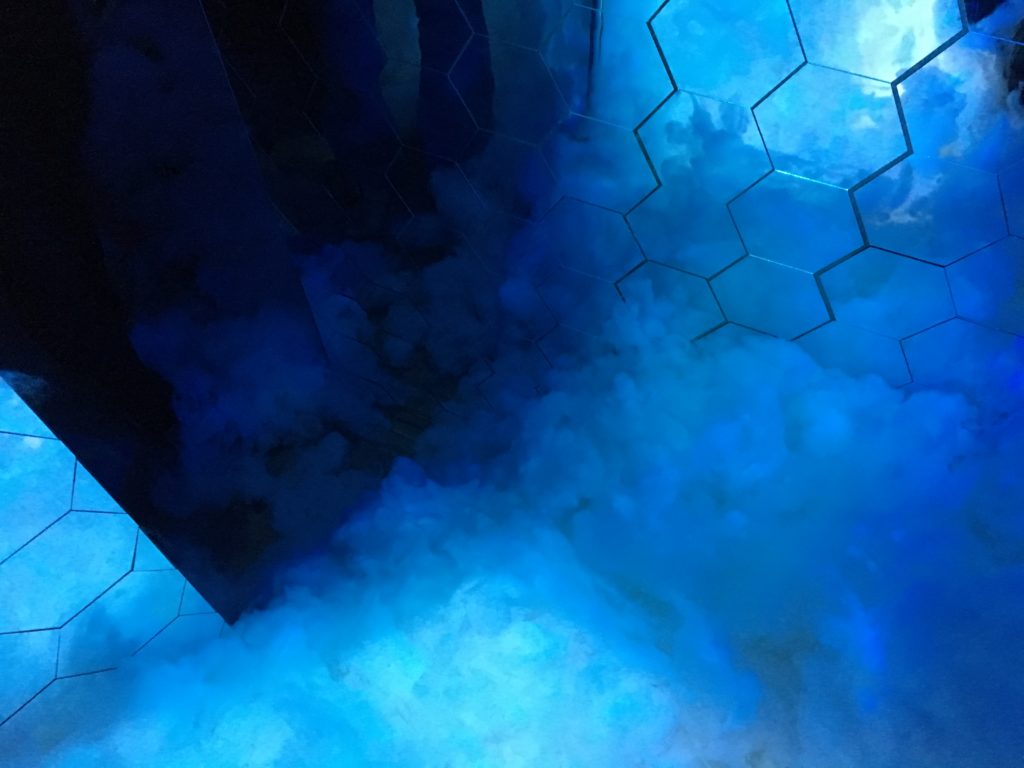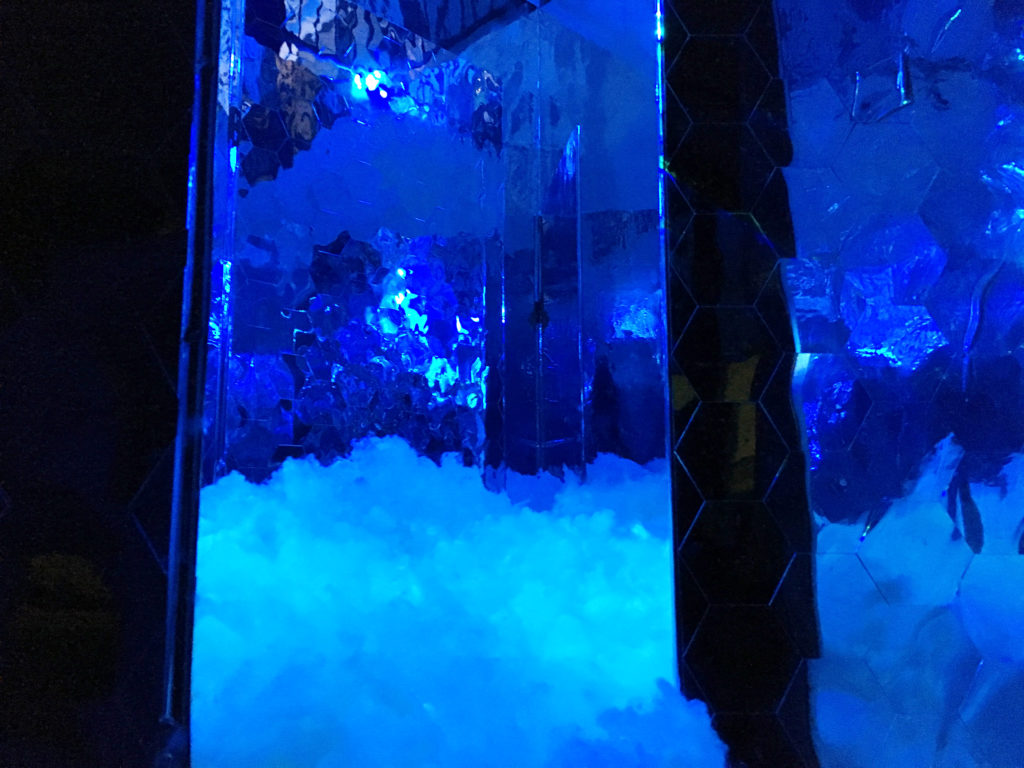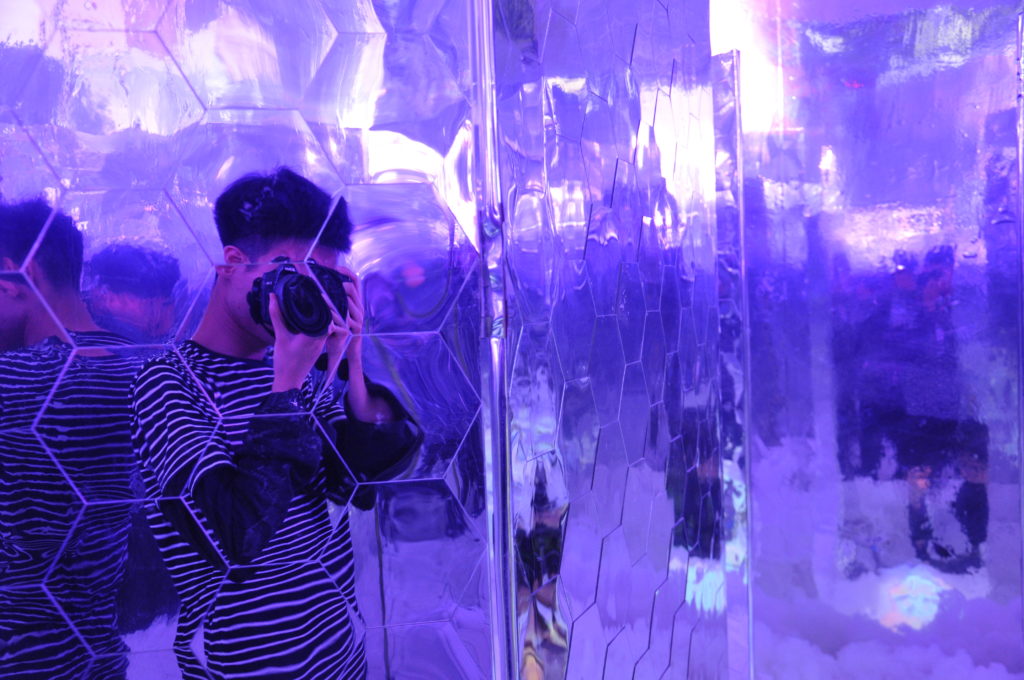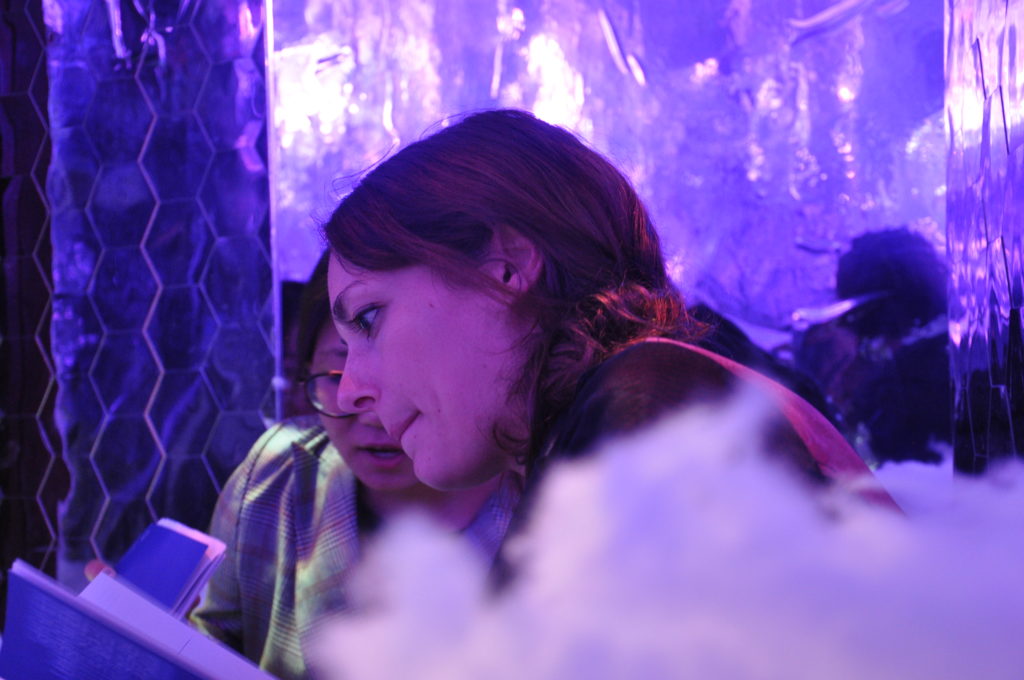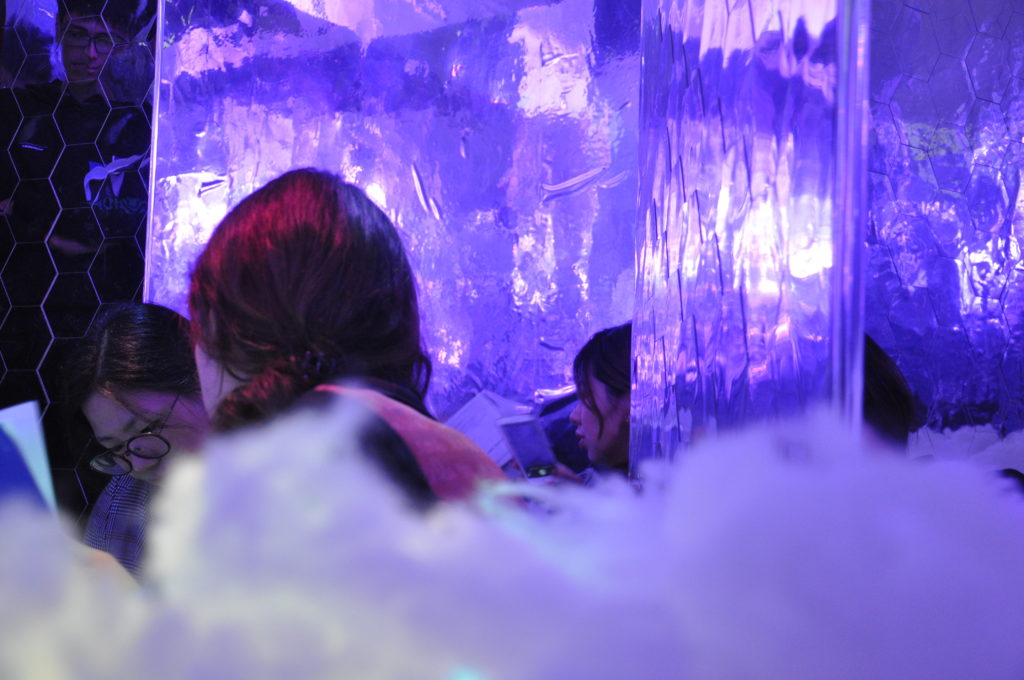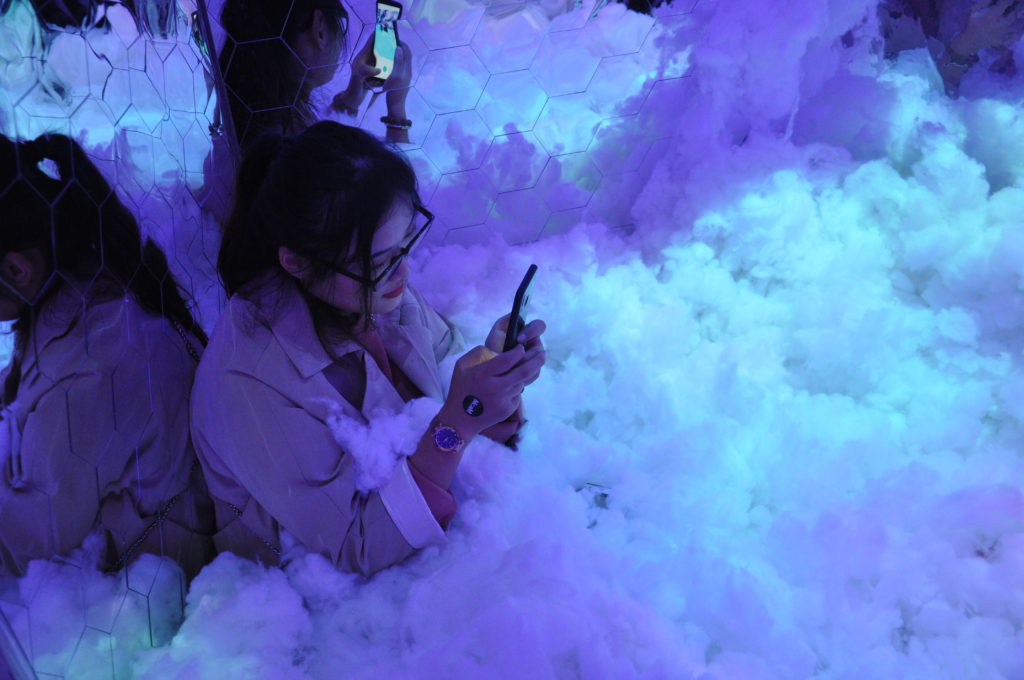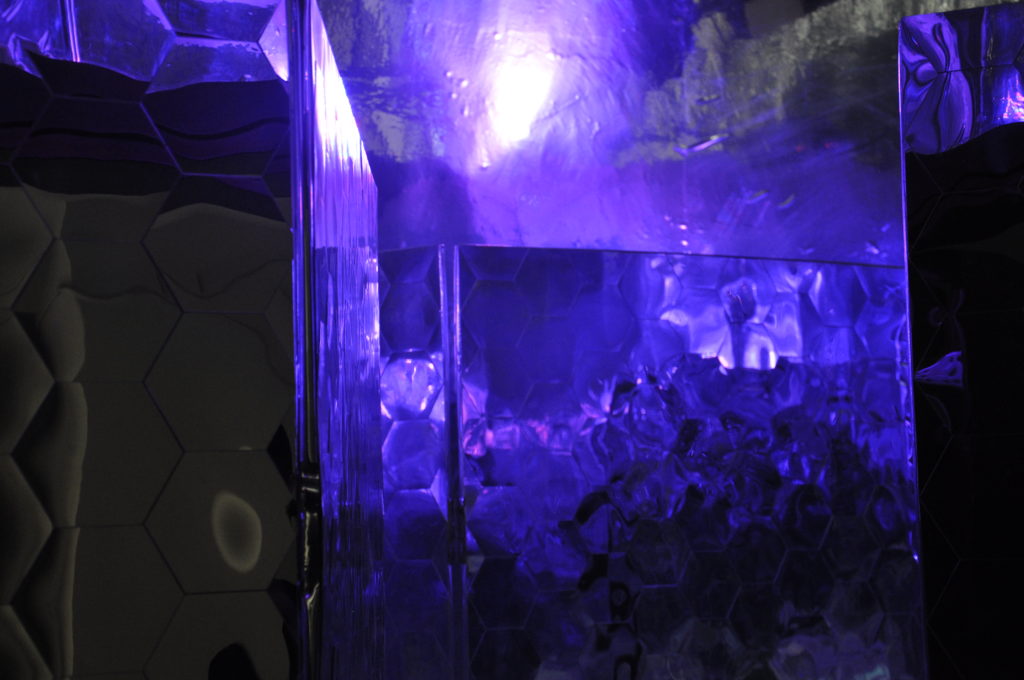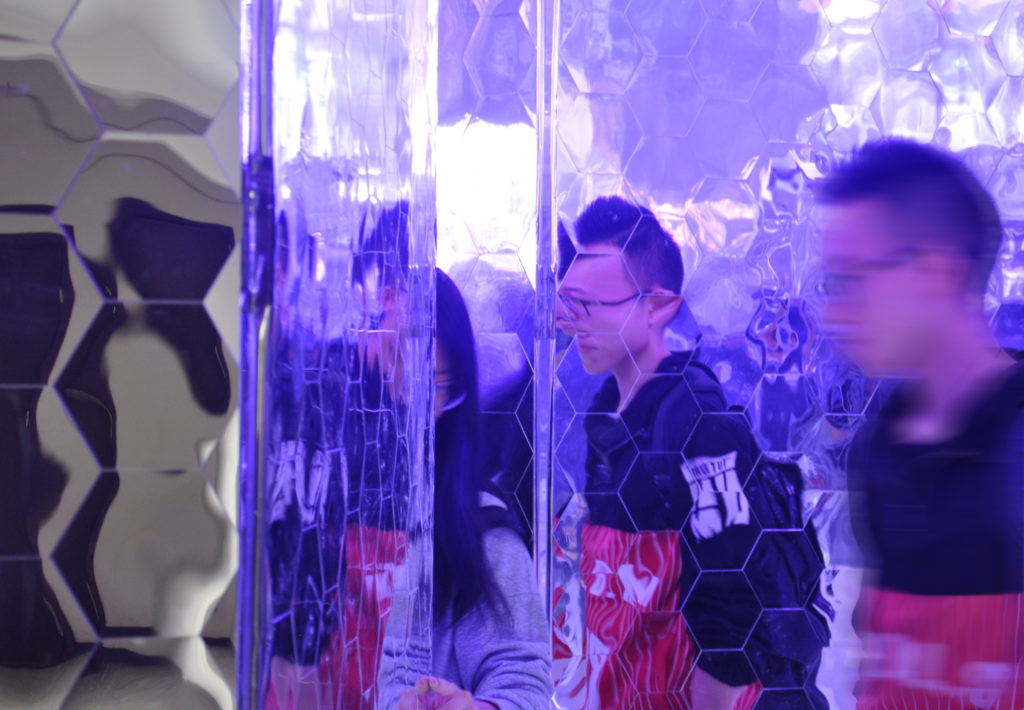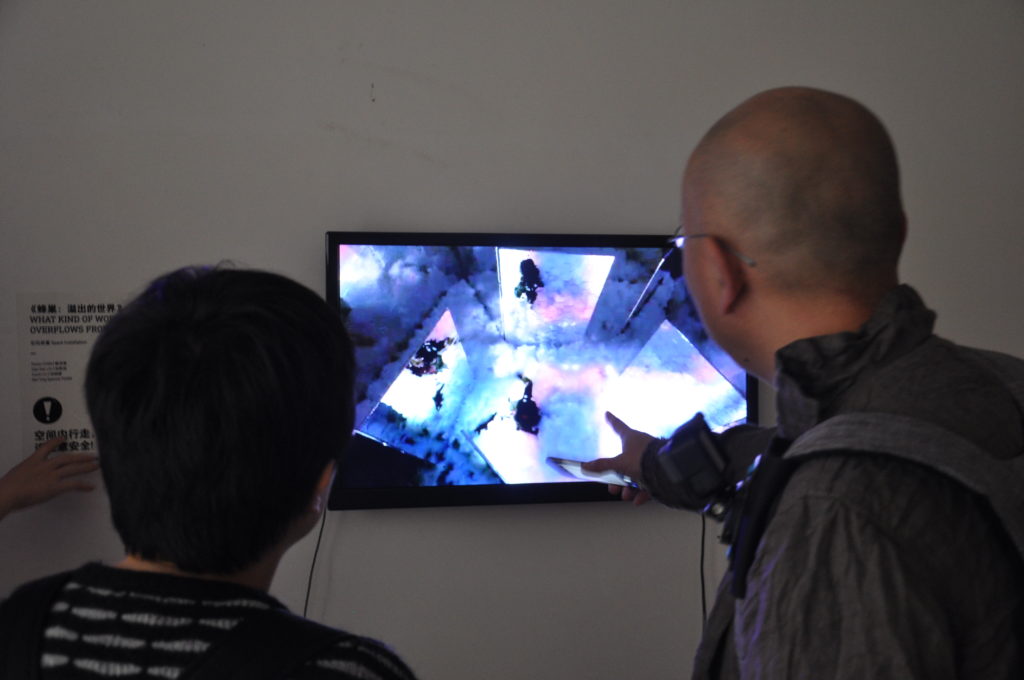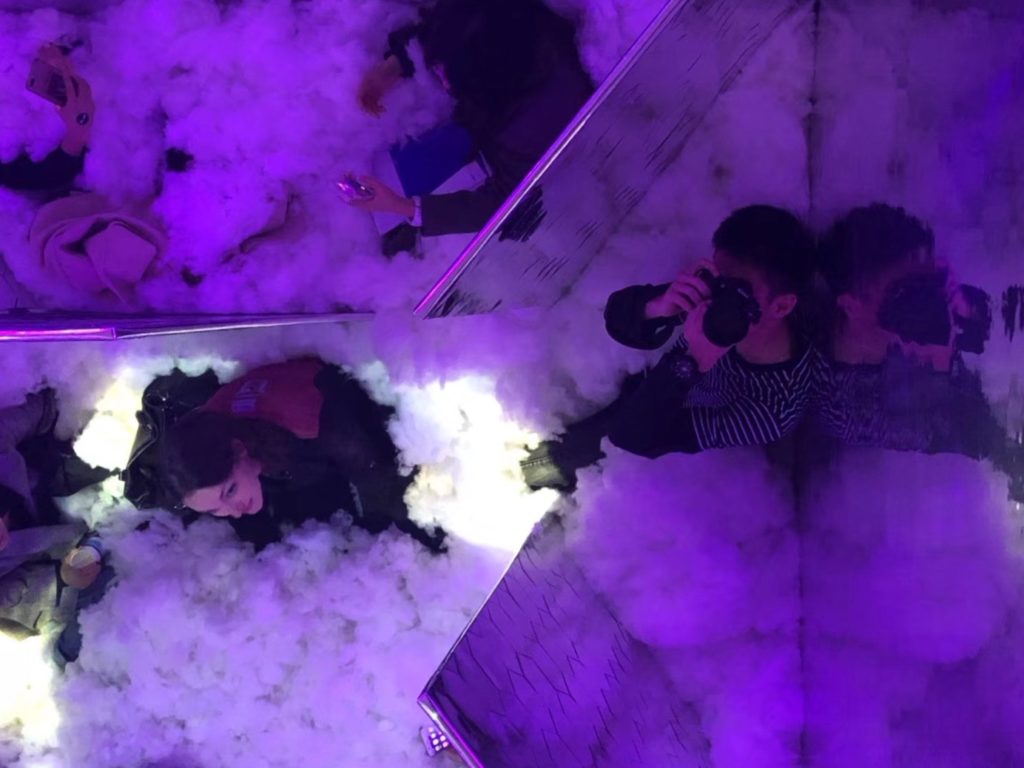A space installation by Peitao Chen (Visual Communication Design, China Academy of Art, Hangzhou), Star Sijia Liu (Creative Media, City University of Hong Kong), Xiaoli Liu (Intermedia Art, China Academy of Art, Hangzhou) and Mei Ting Spencer Poon (Visual Art, Hong Kong Baptist University).
Intro
The crowded and small personal space of Hong Kong apartments affects the living habits of the people living in this city. We found that crowded personal space subtly influences the behaviour and thinking of the individual, and eventually becomes an important factor impacting social solidification.
Concept
This work aims to use (the notion of) the beehive to reveal the sense of oppression caused by crowded space, as well as the impact on physical, psychological and spiritual parts, while also raising awareness of people living in such spaces. We aim to explore behaviour and emotions, which are hidden or neglected and ask ourselves: What kind of world overflows from the beehive?
Process
At the group building stage, all of our group members were interested in the small and narrow living spaces of Hong Kong, and wanted to develop our project in this direction. We also picked the word “Beehive” to display our idea. After we had decided on the topic, we began to imagine how to build a small space to make people feel not only crowded but also flexible. At the beginning, we intended to build a bedroom with furniture to imitate the real Hong Kong style living room. However, after some mentoring sessions, we found that it would be better to create a more abstract space. Then we embarked upon the struggle of how to achieve this. By way of a lot of discussions, we figured it might be better to make a space that evoked the beehive. We chose wood boards and hexagonal mirrors as main elements for construction, and planned to put a great amount of cotton to fill up the whole room. Then we did sketching and calculating of the space. We also wanted to use visual projection to light up the space, so we made some videos with different hexagonal patterns. When we arrived in Shanghai, the first thing for us was to measure the room and compare it with our estimations. Fortunately, the actual size matched our previous calculations, so we could quickly order all materials. When the materials arrived in the museum, we began to set up the space and finally succeeded in mounting it.
Sketching…
Setting up…
Result
The final display met our expectations: we built a space with mirrors, cotton and a play with light and video projection. The audience could either enter to the room from the door underground, or look down onto the space from the ground floor. The experiences would be very different due to this variety of perspective. When looked at from upstairs, people would see the room was divided into hexagons, just live beehive. They would also see how other people relax immersed in the cotton. As we had hoped and expected, it was quite an attraction. If people actually entered the room, they could dive into the soft cotton to play or stay and spend a bit of time. The mirrors were also appreciated by the audience as backgrounds for photos. We wanted people to leave the space with something, be it the cotton on their clothes, the photos in their cameras or just a good feeling.

